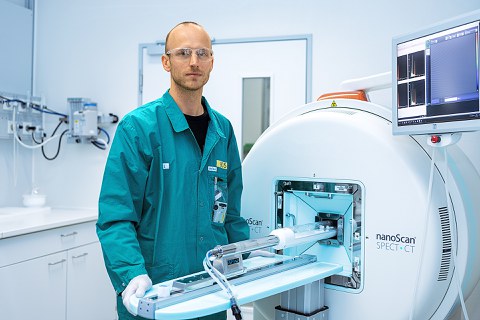Feb 09, 2023
Mission to beat rare cancers

In order to be able to measure the precisely deposited radiation dose in the tumor, Dr. Martin Ullrich has optimized the SPECT imaging method for small experimental animals at the HZDR. Picture: HZDR/Christoph Reichelt
Only one in 100,000 people suffer from a pheochromocytoma, a tumor of the adrenal gland. If the tumor has already metastasized, a radioactive compound can be used to detect malignant cells that have spread to other parts of the body, and to irradiate them from the inside. However, the preparation containing the beta emitter Lutetium-177 can only bind to the tumor if it has sufficient target molecules, which is not always the case. Then the radiation dose is often insufficient to control the cancer. By administering two approved drugs prior to therapy, a research group at the Helmholtz-Zentrum Dresden-Rossendorf (HZDR) has succeeded in increasing the number of target molecules for radionuclide therapy in a mouse model, delaying tumor growth. The experiments were conducted in cooperation with the TU Dresden Medical Faculty and the University Hospital Carl Gustav Carus Dresden.
Continue reading here.
